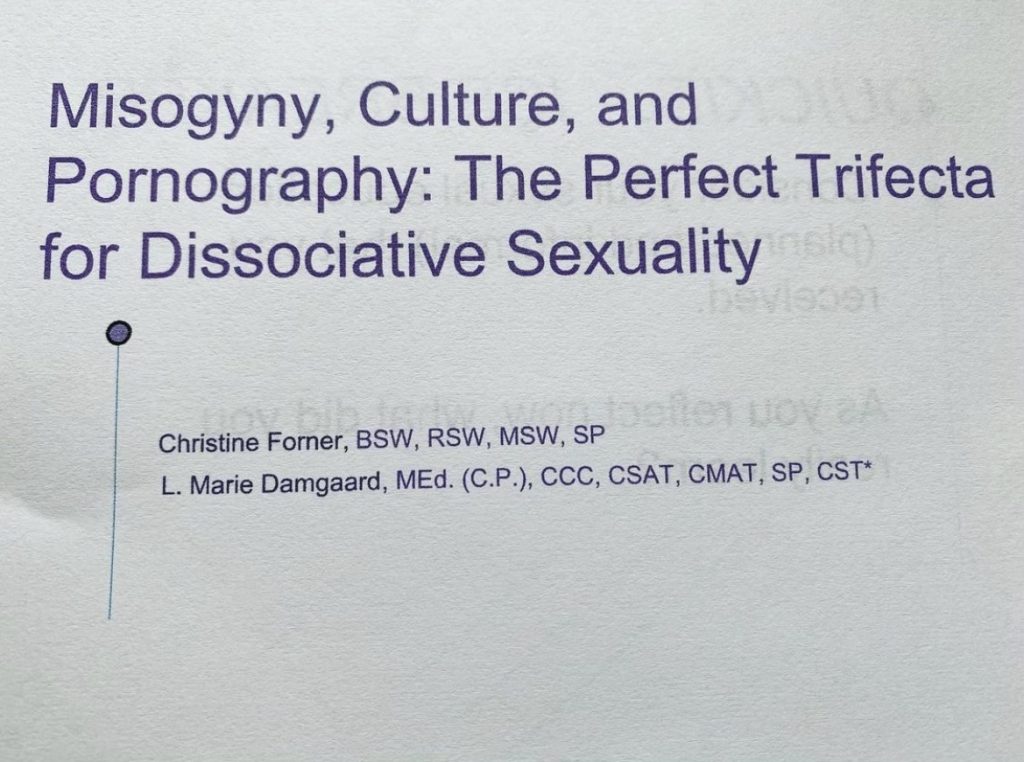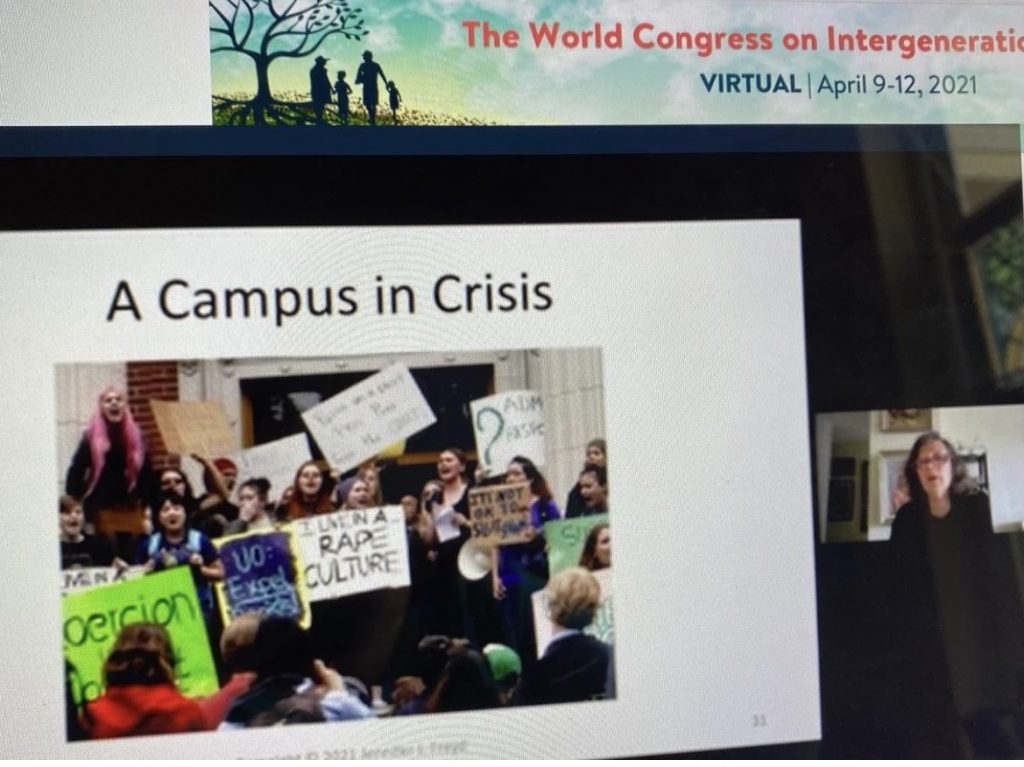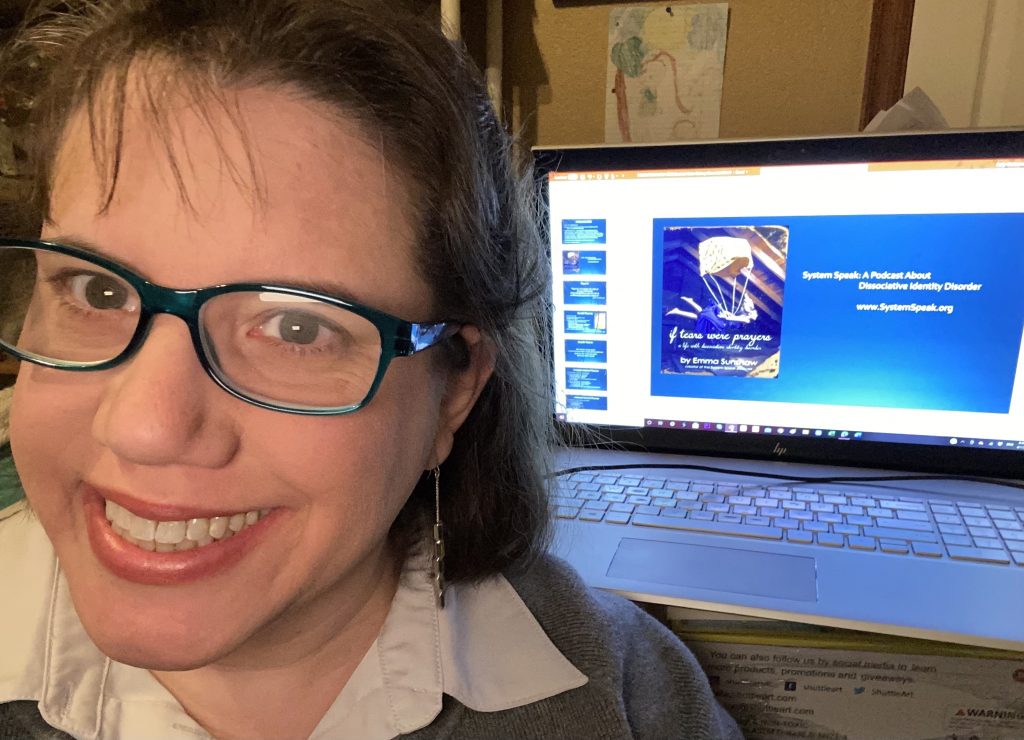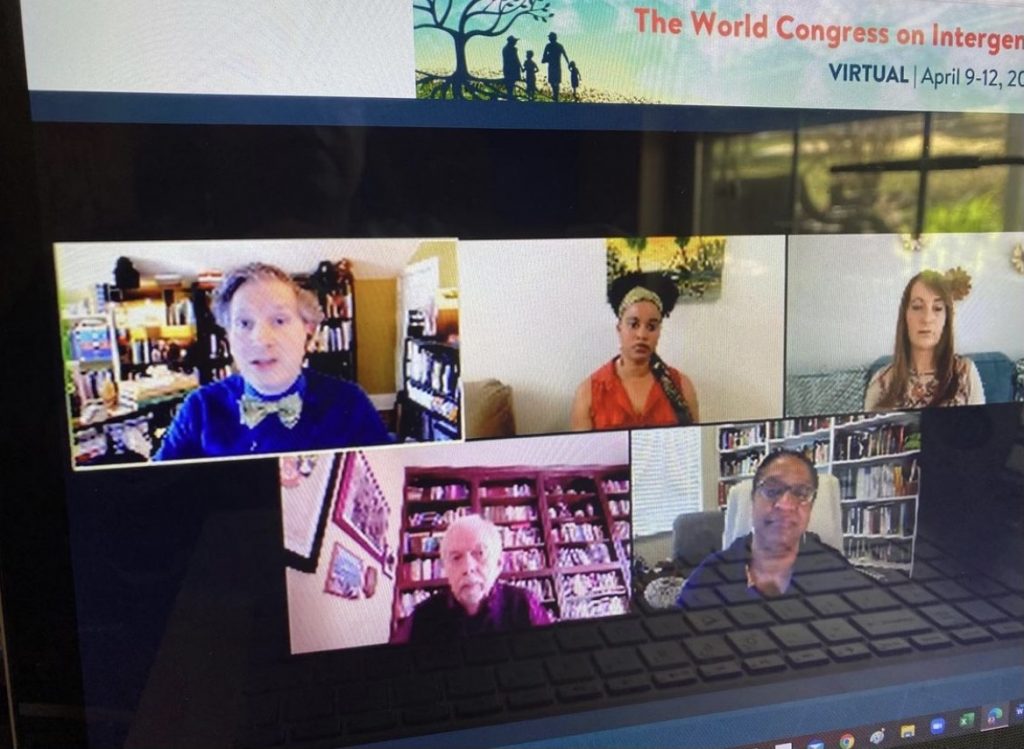Saturday
There were so many options to choose from on Saturday! It was very difficult for me to choose sessions. I had to decide based on the needs of my own clients, so these sessions below are the ones that I attended live. I absolutely will be watching the other sessions on the ISSTD conference website. (Please note that recordings are currently only available for registered conference attendees)
The first Saturday session I attended was a panel with Rick Hohfeler, Peter Maves, and Valerie Sinason entitled Transference Dynamics in the Treatment of Complex Trauma and Dissociative Disorders. Valerie shared about the framework of treatment: What’s being acted out? What’s being projected? What’s being communicated (without words)?
Rick emphasized the need for consultation, reminding us that “when we get anxious, we stop thinking”. He listed some of the dangers that can happen with long-term therapy, such as coasting on transference instead of continuing to build the relationship, dis-engaging passively, or supplanting therapy with familiarity. He pointed out that we need to talk about the familiarity because it gives us permission in session to discuss enactments.
Peter Maves spoke about the “real” relationship between therapist and patient. He spoke of “tears and repairs” in the relationship, with tears being our mistakes and repairs including apologizing, owning our mistakes, learning from them, and correcting them. He also emphasized that we need to let our clients develop their own treatment goals and decide for themselves what healing looks like as we support them in those goals.

The next session I attended on Saturday was Misogyny, Culture, and Pornography: The Perfect Trifecta for Dissociative Sexuality presented by Christine Forner and Lisa Damgaard. Christine pointed out that abuse of a child is not a sexual relationship, and so referenced it as “assault with genitals” to make language more precise. She also shared that most DID clients brand new to therapy do not yet know the difference between abuse and sexuality, but desperately want to be loved; don’t know about consent, much less agency, and struggles with “Littles”, or fears about sex. She recommended focusing on consent, attachment, safety, pleasure, and bonding, and pointed out that not all dissociative sex is problematic (such as kinks or other experiences that are both intentional and consensual).
Lisa shared that people born after 1995 stay at home longer, have fewer social skills, and post on social media based on what others appreciate or “like” (as opposed to posting as a form of self-expression). She shared statistics that it only takes 10 clicks to get to pornography online, and that pornography is 12% of websites, 25% of search engine requests, and 35% of downloads. They spoke about how it changes the brain and impacts the body. In contrast, they listed traits such as gentleness, kindness, and connection as those, as those that heal the body and decrease dissociation… but also cautioned that applying care even gently can hurt because it feels dangerous to the survivor, so to go very slowly and safely.
Following this were the Annual ISSTD Awards, which can be viewed on the website here. Please note that you will need to create an account on the site to view the Awards if you were not a registered conference attendee.

In the afternoon on Saturday, Jennifer Freyd spoke about Betrayal Trauma Theory and Institutional Betrayal. She defined institutional betrayal as a failure to respond to those dependent on the system, organization, or institution. She clarified that this failure could be a failure to prevent, a failure to respond, or other dynamics such as making it difficult to report, normalizing the abusive behavior in the environmental culture, covering up incidents, or punishing people who report trauma. She said that the harm caused by these failures are both pragmatic and psychological. She then presented data from different studies that applied Betrayal Theory to COVID19 responses.
The final session I attended on Saturday was about Psychodelic-Assisted Psychotherapy. I actually chose this session because I get frequent emails about it on the podcast, but literally know nothing about it. This was presented by Rochelle Sharpe Lohrasbe and Kate Browning. They said this topic is important because the prohibition on psychedelics is going away, and there is a lot of hype about them, so clinicians need to be informed.
They explained limitations of research into psychodelic-assisted psychotherapy as being due to its exclusion from Western biomedicine, with such treatments often happening “underground”. They also added that there is no specific psychodelic research on dissociative disorders because of how complex trauma survivors tend to be excluded from research generally. They said that psychedelics act as “amplifiers” of deep unconscious contents, making them available for conscious processing. They reported that psychedelics have been shown to improve outcomes for PTSD symptoms, depression, suicidality, and anxiety, but have poorer outcomes when clinicians don’t understand complex trauma or have unrealistic expectations. They also reminded clinicians that while different medicines have different “signatures”, each experience is highly individualized, so it may be better to start with “enactogens” or “empathogens” that facilitate attunement, resonance, and general relationality. They recommended against use if there are physiological contraindications, if the person is generally overly busy or stressed, and if there is no social support, or if there is a lack of caring relationships, as the experience of psychedelics is not contained by the office session itself.

Sunday
I was unable to take notes on many sessions on Sunday due to my own presentation and moderating several others. For that reason, I am sharing the recap of both Sunday and Monday in this article. I will be looking at the ISSTD conference website to catch up on the sessions that I missed!
Following my presentation first thing Sunday morning, I attended Transgenerational Trauma Across Cultures. The panelists were Heather Hall, Dolores Mosquera, Jennifer Gomez, and E.C. Hurley. Jennifer Gomez spoke about cultural racism and gave the example of the changing shape of slavery into the prison system as we know it today and how the police were originally “slave catchers”. She also spoke of the intersectionality of different cultural identities, such as being both Latina and Gay. She explained how cultural racism built into a society becomes structural racism. She introduced the Cultural Betrayal Multi-dimensional Inventory for Black American Young Adults, applying Betrayal Trauma Theory to structural and cultural racism.

Dolores Mosquera spoke about the different facets of interpersonal partner and family violence. Specifically, she explained how attachment develops neurobiologically, security develops through the experience of predictable and appropriate responses, and empathy develops through attunement. She showed how an infant or child not being responded to compromises the development of attunement, which hinders empathy, and how exposure to harm or lack of care compromises security. This, she said, teaches children to interact by controlling others rather than being present with them or caring for them.
E.C. Hurley explained how military culture is perpetuated in families, and what the impact of this is on families.
Following this session, ISSTD held the annual Town Hall meeting where members and non-members could meet together and ask questions of leadership. We discussed the “I” in ISSTD, and what we have done over the last year to develop a more international presence. We also spoke about our progress in making trainings more accessible and offering materials and courses in other languages.
Next was the Annual Business meeting for ISSTD. This included the financial report and updates on the strategic plan. The Board also announced that they hope the new Treatment Guidelines will be out in 2022, include guidelines for adults, guidelines for children, and guidelines for transitional age youth.
I moderated the sessions for the rest of the day, so was unable to recap those or other sessions for Sunday.
Monday
Monday morning opened with Working With Victims of Gender Violence, as presented by Dolores Mosquera, who expanded on her panel presentation. She identified fear, shame, guilt, and grief as blocking emotions. These interfere with our capacity to choose a course of action, making choices to keep ourselves safe, or cope with trauma.
In The Effect of Trauma on the Next Generation, Rachel Yehuda presented her research on the children of Holocaust survivors and families whose children were in utero during 9-11. She explained the impact on DNA, and how this is passed down to children. Researchers are now able to identify trauma passed down from seven generations.
The closing session I attended was with Christine Forner and Lisa Danylchuk presenting about Self-Care. They spoke of tending to our bodies, nourishing our bodies, and gave examples of mindful movement. This was really a lovely way to close the conference.

